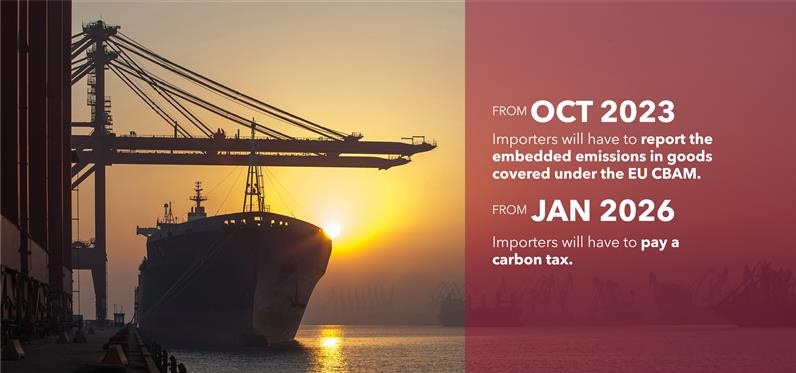The Implementing Regulation outlines the procedures for monitoring and calculating the embedded emissions of imported products. The specific rules for calculating these emissions vary depending on the production process and are notably intricate. Additionally, for any given production process, greenhouse gas (GHG) emissions monitoring must be carried out using one of the following two approved methods, referred to as “EU Methods”:
- 1. The calculation-based approach: which involves determining GHG emissions from source streams based on activity data obtained through measurement systems and additional parameters from laboratory analyses or standard values.
- 2. The measurement-based approach: which entails determining GHG emissions from emission sources by continuously measuring the concentration of the relevant greenhouse gas in the flue gas and the flue-gas flow.
Recognizing the limited time importers and producers in third countries have had to adapt to the CBAM’s requirements, the implementing regulation allows for additional flexibility in monitoring methodologies until 2025, with the following alternatives, referred to as “non-EU Methods”:
- Using a carbon pricing scheme where the installation is located: until December 2024, other GHG emissions monitoring systems are permitted, referred to as “Other Methods.” These include a carbon pricing scheme at the production installation’s location, a compulsory GHG emissions monitoring scheme at the production installation’s location, or an emission monitoring scheme at the installation.
- Reporting declarant may use other methods for determining the emissions: until July 31, 2024, for imports of goods where the reporting declarant (either the importer, or indirect customs representative who lodges a customs declaration) lacks the necessary information to use either the EU Methods or Other Methods, any methodology may be employed. This may include using default values made available and published by the Commission for the transitional period or any other default values listed in Annex III of the implementing regulation. In such cases, the reporting declarant must indicate and reference in the CBAM reports the methodology used to establish these values. However, any method other than the EU Methods must ensure similar coverage and accuracy.
To calculate embedded emissions for complex goods, particularly downstream products, operators must also monitor and report the quantities of specific input materials known as “precursors.” These precursors themselves contain embedded emissions used in the manufacturing process. Operators are additionally required to determine the embedded emissions of these precursors, which must be added to the direct and indirect emissions attributed to the production process. The relevant precursors for each production process are identified in Annex II of the implementing regulation, and additional qualifying parameters that need to be reported are listed in Annex IV.
Within this context, reporting declarants are permitted to use “default values” for input materials or subprocesses contributing to less than 20% of the total emissions of complex goods. These default values will be published by the Commission.
To begin your CBAM journey, we can walk you through the below flowchart on this process. Please schedule a meeting…

